What to be on the lookout for…
Cabbage Root Maggot
Cabbage root maggot (CRM) is a pest of all types of brassicas, but is primarily damaging in cabbage, broccoli, Chinese cabbage, radishes, turnips, and rutabaga. The first flight occurs in April and May damaging early spring brassicas, while the third flight which occurs from mid-August to September. This fourth generation of larvae causes injury to fall root crops. Freshly tilled fields and decaying organic matter attract adult flies, so timing the termination of cover crops and field crop rotations to allow for a 3-4 week gap before planting is ideal when possible.
CRM symptoms includes wilting, leaf discoloration, and plant death in leafy and heading crops, and tunneling in root crops. This fourth generation will overwinter as pupae and re-emerge as adults next spring. Plan to rotate spring brassica crops far from fields that are heavily infested this fall. A soil application of Verimark at planting, or Radiant or Entrust (heading and leafy brassicas only) can control CRM if applied when eggs are first seen at the base of plants. Once larvae have been feeding in roots for several weeks, chemical control is difficult. If a root crop has been rendered completely unmarketable, tilling it under will reduce the number of flies emerging from that field next spring.
Continue scouting to understand potential infestation levels as it will help inform management decisions for future plantings. Consult the New England Vegetable Management Guide for up-to-date chemical options: Brassica Insect Control.
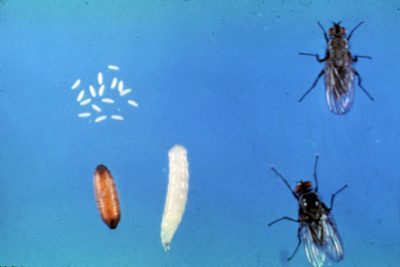
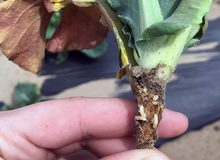
Cross-striped Cabbageworm
Cross-striped cabbageworm (CBC) caterpillars are often most abundant in late-season brassica plantings and they can cause significant damage. This is partially because they lay their eggs in batches, so caterpillars emerge in clusters. Scout for egg batches that are yellow, flattened, and overlapping like fish scales. They will be attached to the lower leaf surfaces.
Larvae grow 3/4" long in two to three weeks. Caterpillars produce small holes in leaves until only the veins in the leaf remain. They might also target terminal buds and sprouts, or burrow into heads. Continue scouting weekly for caterpillars and damage.
Spray if 5% of the plants are infested. For other problematic caterpillars such as the imported cabbageworm or the diamondback moth, spray at a 15% threshold from head formation to maturity, and a 35% threshold before heading. For leafy vegetables (e.g. kale and collards), spray at a 10-15% threshold. See the New England Vegetable Management Guide for spray options: Brassica Insect Control.
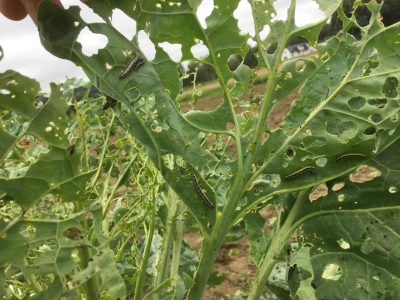
Eyespot on Corn
Eyespot in corn is caused by the fungus Aureobasidium zeae. Lesions appear on the leaves of the cornstalk, usually starting on the lower leaves and moving up the plant. This is not a very common disease and doesn’t typically require intervention.
Learn more about this disease here: https://cals.cornell.edu/field-crops/corn/diseases-of-corn/eyespot

Cucurbit Downy Mildew Update- confirmed in winter squash
There are two clades of downy mildew that affect different cucurbit crops. Earlier this summer we reported on downy mildew in cucumbers, referencing Clade 2 which preferentially infects cucumbers and cantaloupe and usually arrives in New England first. We recently confirmed Clade 1 in Hartford County. This infects a different grouping of cucurbits including watermelon, kabocha squash, giant pumpkins, butternut squash, summer squashes, acorn squash, and Halloween pumpkins. With both clades present in CT, it is possible that CDM will develop in any cucurbit crop in CT.
Cornell Cooperative Extension has some great resources detailing informaiton about downy mildew and management options:
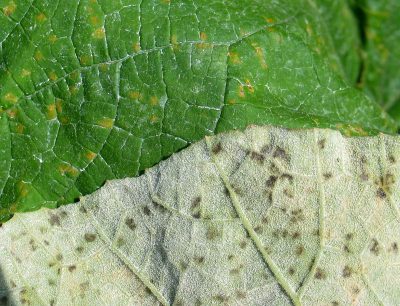
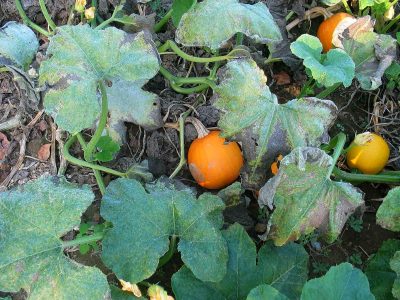
Winter Squash Maturity, Harvest, and Storage
There is a daunting list of diseases, insects, and weather events that threaten the quality of pumpkins and winter squash as we patiently await their maturity. Ideally the plants will stay healthy and the weather will cooperate all the way until the end, but that’s not always the case. Chuck Bornt, Vegetable Specialist at Cornell Cooperative Extension in Eastern New York, highlights what to keep in mind if you have winter squash and pumpkins in your field: Winter Squash and Pumpkin Maturity, Harvesting and Storage Tips.
Sweet Corn Pests - Trap Count Update
| Location | CEW (avg per night) | ECB - NY | ECB - IA | ECB - III | FAW |
| Glastonbury A | .14 | 9 | 0 | 0 | 2 |
| Glastonbury B | 1.43 | 2 | 0 | 0 | 3 |
View our Sweet Corn Pest ID Guide.
Spray intervals for CEW can be found on our website.
See the New England Vegetable Management Guide for management strategies for all sweet corn insect pests.
Participate in UMN/UNH High Tunnel Cover Crop Trial
Becky Sideman at University of New Hampshire is once again putting the call out to recruit organic high tunnel growers as part of an OREI funded high tunnel cover crops project. This Fall 2025 trial will look similar to last year’s: growers will get sent seed, a free soil test and help interpreting it, and will be asked to complete a couple of short surveys to let the researchers known how it went. A biomass sample from the following spring would be ideal as well, but is not required.
These on-farm trials are meant to evaluate how legume cover crops perform in active farming systems. Farmers will not be asked to plant replicated arrangements of the trial plots on their farms. Instead, researchers will plant all of the cover crop options in replicated plots on a research station, while each participating farmer plants one plot of each of the cover crop options that they select. Farmers can select between two levels of participation and compensation, depending on the amount of time and effort they are willing to commit.
- Read the full trial instructions, detailed species and timing menu, and farmer expectations for each level here.
- Watch the recording of the High Tunnel Cover Crop Trial Webinar
- Sign up to participate by telling the team which species you’d like to grow and how much seed to send.
Contact the research team at hightunnel-cc@umn.edu with any questions.
Continue to be on the lookout for the following pests...
Want the New England Vegetable Management Guide and/or Northeast Vegetable and Strawberry Pest ID Guide at your fingertips?
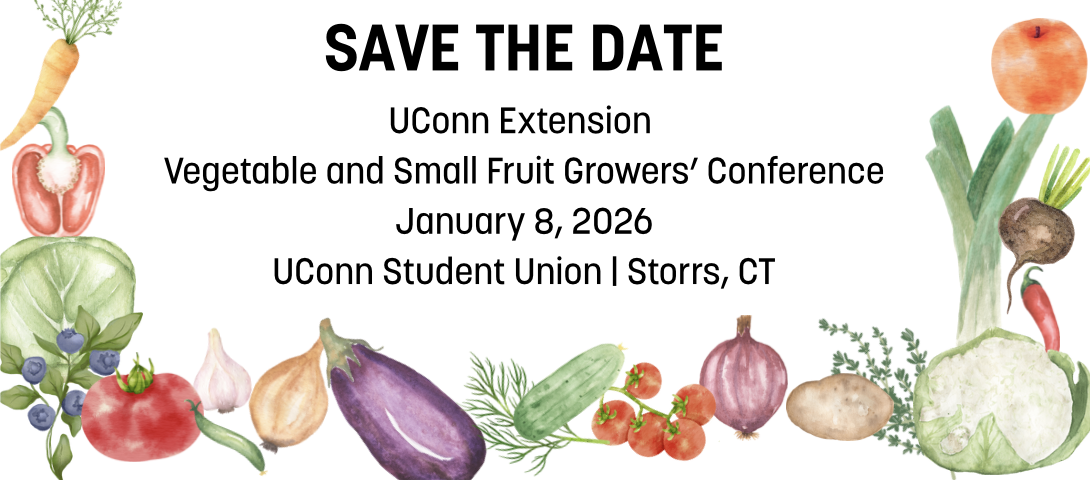
Stay in touch with us
- Share what you see: We're here to assist with identification, management strategies, and guidance on best practices. Send us a photo/message via iMessage at 959-929-1031.
- Facebook Group: UConn Extension moderates a private Facebook group specifically for commercial vegetable producers. It is a space to share photos of insects and diseases you find in your fields, ask questions, share ideas, and stay engaged with growers across the state. Join the "UConn Extension - Vegetable IPM" Facebook Group
- Schedule a consultation: Would you benefit from meeting with an Extension Specialist at your farm to provide insight on pest or disease identification, management strategies, and more? If so, please contact our Vegetable Extension Specialist, Shuresh Ghimire, to setup a farm visit. Contact him at shuresh.ghimire@uconn.edu or 860-870-6933.
Contact Information
Shuresh Ghimire, Vegetable Extension Specialist: shuresh.ghimire@uconn.edu
Nicole Davidow, Vegetable Extension Outreach Assistant: nicole.davidow@uconn.edu
Vegetable IPM Office Phone Number:
860-870-6933
Vegetable IPM Cell Phone Number:
959-929-1031 (feel free to text/iMessage photos)
Vegetable IPM Pest Alert Audio Recording:
860-870-6954
Thank you for reading!
This report was prepared by Nicole Davidow, Outreach Assistant, and Shuresh Ghimire, Commercial Vegetable Specialist, UConn Extension.

The information in this document is for educational purposes only. Any reference to commercial products, trade or brand names is for information only, and no endorsement or approval is intended. Always read the label before using any pesticide. The label is the legal document for product use. Disregard any information in this report if it is in conflict with the label. UConn Extension does not guarantee or warrant the standard of any product referenced or imply approval of the product to the exclusion of others which also may be available. The University of Connecticut, UConn Extension, College of Agriculture, Health and Natural Resources is an equal opportunity program provider.
